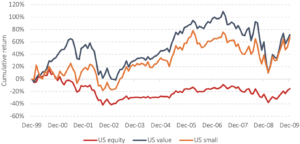As the year comes to an end, 2024 has undoubtedly been an election year. Voters in 64 countries were expected to turn out in greater numbers than ever before this year to choose their nations’ future leaders.
As a major world power and a major exposure in investors’ portfolios, the US presidential election naturally attracted a lot of attention. With his overwhelming win, Donald Trump was able to secure not only the White House but also the coveted trifecta, which consists of the Senate and the House of Representatives. The world will be closely watching what happens to the United States, regardless of one’s political or economic beliefs.
Investors continuously cast their own “votes” in stock markets, some more optimistic than others, based on their perceptions of what the future may bring. The current market price is a consensus reached by the combined opinions of all investors. Today’s market prices already take into consideration all available information, and they will only move further in response to the availability of fresh information, which is by definition random.
Naturally, some people will disagree with the current market pricing and attempt to realign a portfolio to take advantage of the alleged possibilities. Regretfully, the data indicates that very few people can do so successfully and continuously throughout time.
Spreading eggs among baskets, or diversification, is a key component of our investment strategy. We make certain that diversification is accomplished both inside and across nations. Through systematic tilts to smaller companies and value companies (those with low prices relative to their fundamental measurements like book value or sales), exposure to any given region, including the US, extends beyond the largest corporations in the market.
Different parts of the market do well at different periods; however, it is impossible to predict which will happen next. Large tech-based stocks have dominated the US stock market for the past ten years. The upcoming ten years can be completely different. Or it might not.
This idea is aptly illustrated by the so-called “lost decade” of 2000–2009 when investors received little return from the US stock market. As the chart below illustrates, the S&P 500 experienced a spell of negative returns during the decade. Tough times were ahead after the Dot-Com Crash in the early 2000s and the Global Financial Crisis.
That being said, there was some bright side. As segments of the market that produced noticeably favourable returns, those with incremental tilts toward smaller and value-oriented businesses profited from the diversification these exposures provided. The great performance that has since occurred would have been lost by those who were motivated to remove major US corporations from their portfolio due to this subpar performance.
Figure 1: The lost decade, where not all was lost

Source: Dimensional Returns web: US value: Fama/French US Value Research Index and US small: Fama/French US Small Cap Research Index. Morningstar: US equity: Vanguard U.S. 500 stk idx $ Acc. Returns in GBP.
Usually, the largest portion of investors’ portfolios consists of large US stocks. Therefore, it is good news that this segment of the market has produced robust returns, which have assisted investors in achieving their financial objectives. It is best to resist pining for a higher return after witnessing a robust stock market performance in places like the US, as this can result in wealth-destroying behaviours like performance chasing.
Nobody can predict what the future may bring. Maintaining a long-term perspective, staying diversified, and maintaining regular exposure in each region remain the best defences and opportunities for whatever the future holds.


